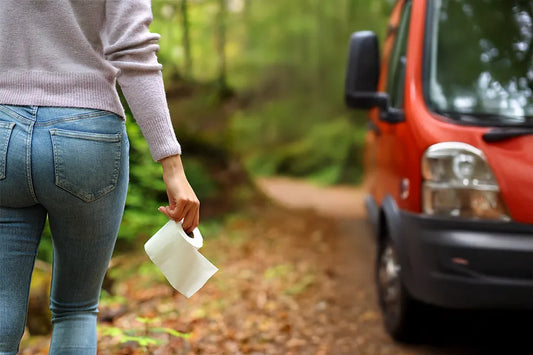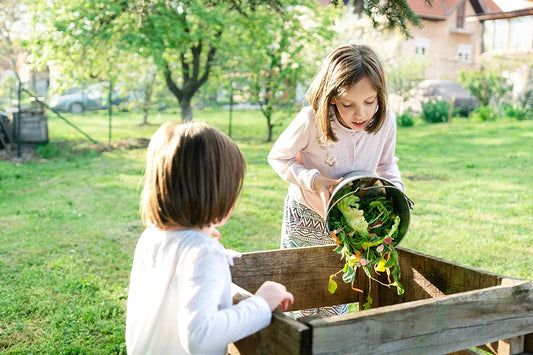How to use our composting toilets
The use of a TROBOLO composting toilet is barely different from that of a conventional toilet. The seating position is identical to that of a toilet, which applies equally to women and men. The separation system works without contact, so that physical contact occurs exclusively on the toilet seat. Standing urination should be avoided, as it prevents proper urine separation.
The height and diameter of the toilet seat correspond to common standard dimensions for our wooden models, such as the TROBOLO SilvaBlœm and TeraBlœm. On smaller models, such as the WandaGO Lite, the seat height is slightly lower due to the compactness. With the equally compact WandaGO, the seat level can be adjusted to height. Regardless of the toilet seat – the cleaning effort is the same for all TROBOLO models and requires no more time than cleaning your water toilet at home.
Finally, the toilet paper used can be placed in the rear part of the TROBOLO, i.e. the solids container, just like in a normal toilet. The emptying process can be carried out hygienically and easily thanks to the securely lockable container and the replaceable inlays for the solids container.
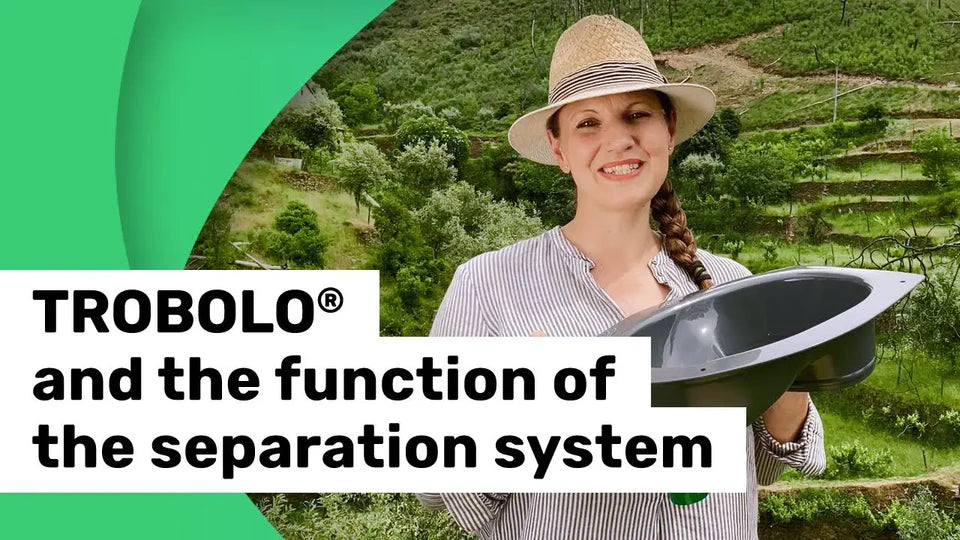
Functionality of composting toilets with a separation system
While human excrements are collected together in a conventional toilet and then flushed into the sewage system, our TROBOLO system separates urine and feces, thus enabling a completely waterless operation.
The core of the separation system consists of an integrated urine diverter made of durable plastic, which is precisely integrated into your TROBOLO and is located directly under the toilet seat in all wooden models. In the TROBOLO WandaGO, the toilet seat and urine diverter are made of one piece. The two merge almost seamlessly. Regardless, in all models the urine diverter is oriented in such a way that the urine in the front part of the toilet opening is directed into the internal liquids container and the feces (excretions) in the rear part of the toilet opening is directed into the solids container.
Both containers are located in the inner area of your TROBOLO, which cannot be seen from the outside, but can be conveniently removed for emptying by folding up the upper wooden surface, or in the case of TROBOLO WandaGO and WandaGO Lite, by removing the toilet seat-diverter combination made of polypropylene.
The liquids container can be closed air- and liquid-tight and can therefore be transported safely even over longer distances. The inlays or collection bags made of recycled plastic used in the solids container are specially tailored to its dimensions. Thus, they can be inserted and removed easily and, above all, hygienically.
This design is a conscious choice and move away from traditional composting toilet systems that begin the composting process directly within the toilet itself. This method often requires additional components like agitators, which are difficult to clean and make the entire process unnecessarily complex. By skipping this pre-composting stage, TROBOLO makes disposal and container emptying significantly easier and more hygienic. For those interested in composting can still do so, thanks to the use of compostable inlays.
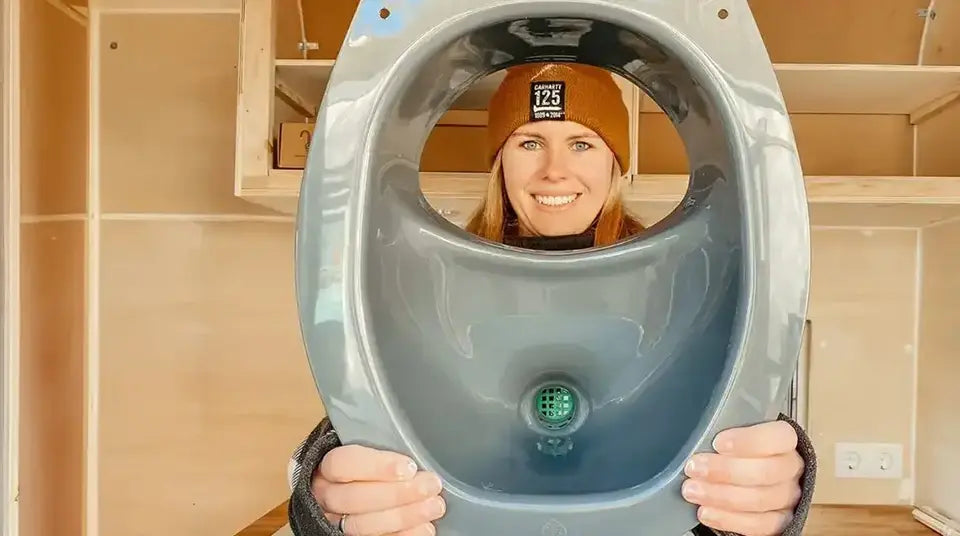
All components of the TROBOLO separation system work effectively and are cleverly concealed inside your TROBOLO. However, thanks to the use of litter and/or an air extraction system, not only are the visually unattractive aspects of the toilet removed from the user’s field of vision, but unpleasant odors are also significantly reduced or completely avoided, as shown in the next section.
Litter and exhaust systems
Thanks to the TROBOLO separation system, odors are effectively minimized — whether you choose to use the toilet with ecological litter or extend it with an electric exhaust system. TROBOLO composting toilets offer both options: when used with litter, residual moisture and odors are bound naturally, while the decomposition process is slowed. When equipped with an electric exhaust system, litter is no longer necessary, as air is continuously drawn out to eliminate odors completely.
Our wooden models, the SilvaBlœm and TeraBlœm, are already fitted with a circular opening in the rear of the toilet body to simplify exhaust system installation. When using litter, it is only added after each “Number Two” — placed into the rear part of the toilet opening to cover feces and toilet paper. Since urine (which accounts for around 90% of human excreta) is diverted separately, the amount of litter required is significantly reduced compared to non-separating toilets.
For more information or assistance, feel free to reach out to our customer support team.
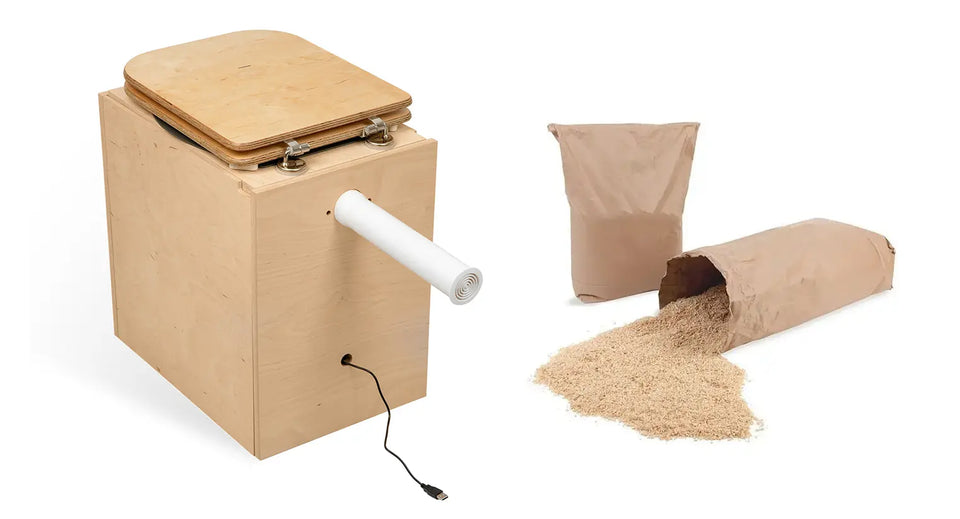
Advantages of urine-diverting composting toilets at a glance
Minimal odors
Separation of urine and feces by the separating system has numerous advantages. Since urine accounts for the vast majority of human excreta, separation has the advantage that the containers can be emptied less frequently and independently of each other compared to a conventional composting toilet without a separation system.
In addition, the rotting processes that occur when urine and feces are mixed and thus the formation of ammonia, which is mainly responsible for the unpleasant odor, is prevented. Finally, litter or a reliably working exhaust air system ensures that no unpleasant odors are emitted by a TROBOLO.
Emptying
Our TROBOLO separating toilet systems also eliminate the need for time-consuming emptying by external service providers, as would be the case, for example, with chemical toilets, the use of a collection pit, sewage pit or tank. This is particularly advantageous when it is not possible for large vehicles to travel regularly to the location of the toilet. Furthermore, emptying by external service providers is often costly.
Instead, you can easily empty your TROBOLO yourself without coming into contact with the excreta, which makes the entire disposal process hygienic and uncomplicated.
Here you will find further information about emptying a composting toilet.
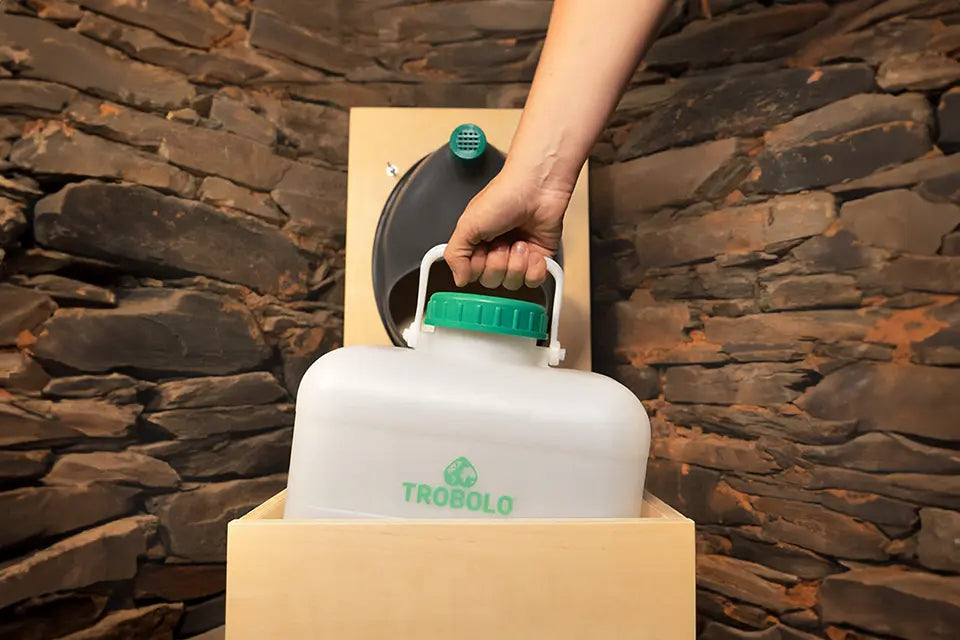
Composting
Finally, thanks to the TROBOLO composting toilet system, you not only save valuable water, but also have the option of composting the collected excrement and returning it to nature once it has decomposed. Due to its high nutrient content, urine diluted with water can be used directly as fertilizer. Solids can be easily disposed of in the home composter together with other organic waste, such as waste from your kitchen and garden.
In the course of the rotting process, which lasts about one year, an effective fertilizer called humus is produced. This can then be spread on your ornamental plant beds, which not only improves the quality and structure of the soil, but above all returns to the earth valuable minerals that once entered the plants via the soil and finally into our organism via food intake.
Thus, composting excrements not only offers you the opportunity to increase the nutrient content of your garden soil, but also makes an important contribution to closing the nutrient cycle and thus to sustainability.
Further information on this topic can be found in our Ultimate Composting Guide for Beginners.
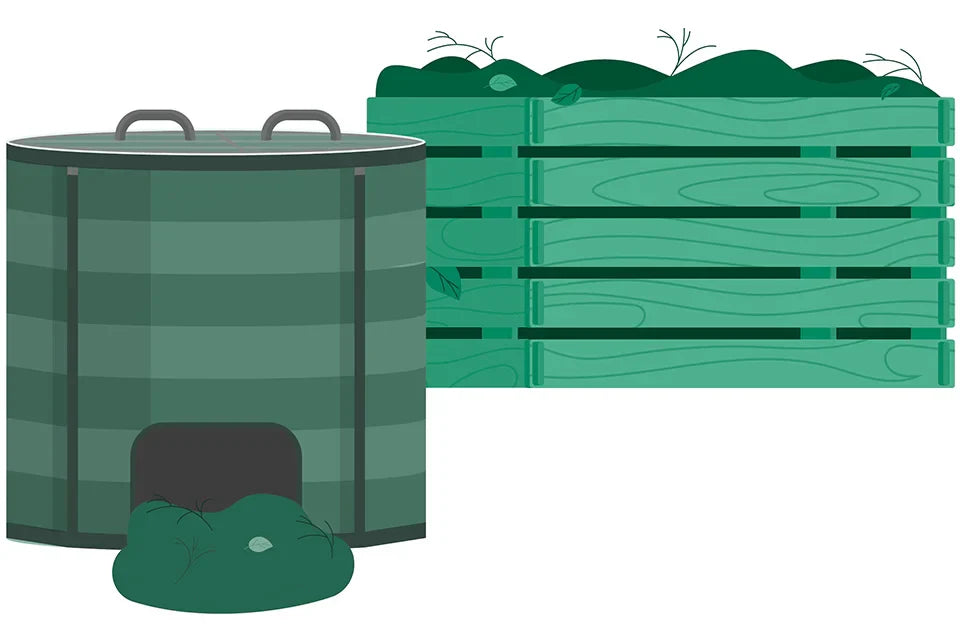
Environmental assessment
Due to the advantages just mentioned, which result directly from the way the TROBOLO separating toilet system works, our dry toilets are significantly more environmentally friendly than conventional toilets or dry toilets that use chemicals or composting toilets without a separating system.
Our TROBOLO composting toilets do not require any water at all, which in turn means that there is no black water produced, and that it does not have to be cleaned afterwards. In addition, the absence of chemicals means that there is no hazardous waste that is costly to dispose of and detrimental to the environment. Should you also decide to compost the excrements and use them as fertilizer, you will not only improve the ecological balance of your home garden, but your ecological footprint as a whole.
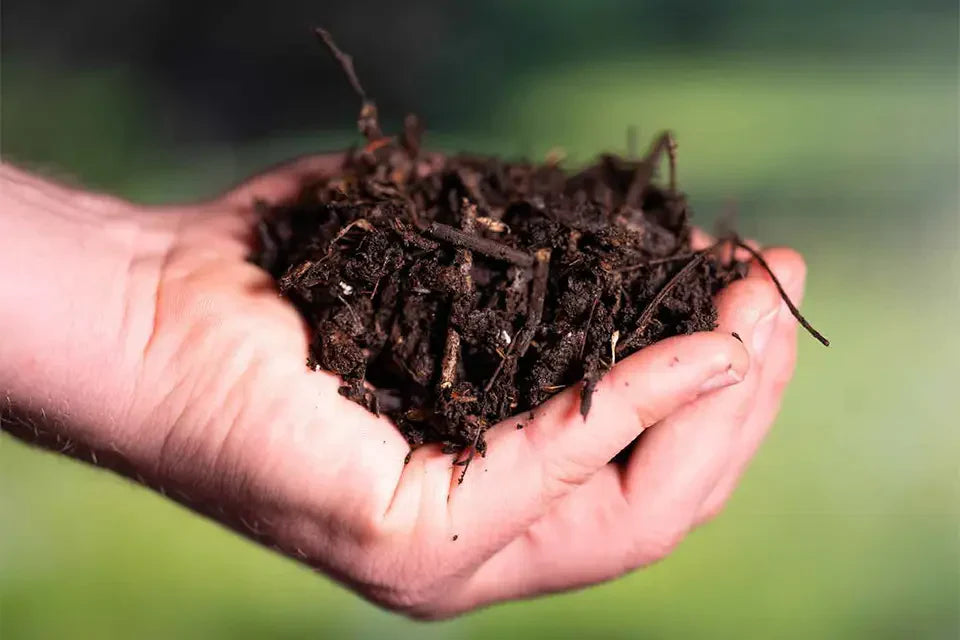
Self-sufficiency
A maximum degree of self-sufficiency results from not having to be connected to the local sewage system and from the simple yet multiple ways of disposing of the excreta.
This means that you are not dependent on any connections when choosing the location of your TROBOLO and therefore do not have to make any location-related compromises when positioning your dry toilet. Our TROBOLO composting toilets are therefore also ideally suited for use in all those places where conventional toilet systems reach their limits.
Cost reduction
Our TROBOLO models are also convincing in terms of running costs and offer you various saving opportunities. These result in particular from the waterless functioning of our composting toilets, which means that not only the costs for water use but also those for disposal and treatment of the waste water are eliminated, thus relieving not only the private but also the municipal purse.
At an average cost of roughly 3 to 6 cents per flush, which is no longer necessary for you as a TROBOLO user, you can save over $110 a year compared to a conventional toilet!
Similarly, when you decide to use our models without an electric exhaust air system, the use of litter and inlays results in only minor costs. When using an electric exhaust system for our wooden models, they become even more economical. Ultimately, all our TROBOLO models can be operated for a whole year at significantly lower cost than conventional toilets or other toilet systems.
Sustainable composting toilets by TROBOLO
The innovative design of our toilet systems eliminates the need for water entirely and, thanks to the integrated urine diverter, guarantees the efficient separation of solid and liquid waste. This alone already significantly reduces the formation of odors. The use of litter reduces odors to a minimum and the additional or even exclusive use of an electric exhaust air system makes your TROBOLO completely odorless. Precisely engineered inlays for the solids container and a liquids container that can be transported safely and comfortably allow for an emptying process that is both simple and hygienic.
The waterless function alone results in an extremely positive environmental balance of our composting toilets, which can be further improved by the possibility of composting the waste. Finally, independence from any connections guarantees a high degree of self-sufficiency unknown in the sanitary engineering world. Furthermore, we only use wood from sustainable production for our wooden models, which also benefits our environment.
This means that you can set up your TROBOLO both at home and in the garden in a much more flexible way than is the case with other toilet systems – not to mention conventional toilets.












